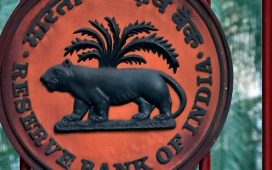He spoke to ET on a PwC India report released Friday that said India’s $1 trillion goods export target can be achieved one year in advance by fiscal 2029 with appropriate measures.
The report, ‘VIKSIT: An approach for India to achieve $1 trillion exports’, offers a six-pillar framework for achieving the target.
“Can we have an outsized focus on manufacturing in a setup which is a very similar setup to what has been done for financial services in Gift City? It encourages you to produce … creates a fair amount of employment generation and an entire ecosystem,” Krishan told ET.
These could be outside the production-linked incentive (PLI) framework, he said. “Maybe some of the elements of PLI are not required because it’s a very different paradigm. It is a 10-year holiday and then by then, the hope is that you have embedded yourself and managed to scale enough.”

He said these manufacturing zones will have to be on a large geographic area and include the private sector. “It is an entire ecosystem with connectivity and low factor cost so that productivity improves,” Krishan added.
Only 1.36% of India’s registered micro, small and medium enterprises (MSME) are exporting, revealing a gap between export growth and MSME internationalisation, he said, making a case for including them in the exports push. “Challenges such as the business environment, export procedures, finance access and market information hinder MSME exports and must be addressed to unlock India’s path to achieving $1 trillion in merchandise exports,” he added.
This target of $1 trillion goods exports by 2030 is not an outstanding aspiration but only an interim one, he said, and called for creating Brand India for every product irrespective of the product category.
The country is looking at an export market of around $7.15 trillion being opened up by free-trade agreements, which can go up to $10 trillion, he said.
Many of the measures outlined in the report need support from states. “It is a world of competitive federalism. I’m quite sanguine,” he added.
Krishan said the private sector also has a role to play in this, especially the large Indian corporates who should be incentivised to invest. “We should give credit to those who spend on innovation and IP creation besides corporate social responsibility. The aspiration of Indian businesses has to be higher,” he said.
On the Economic Survey highlighting the need for Chinese investment, he said sometimes technical inputs or expertise are not available which constrain installing key equipment but now steps are being taken to ease those issues.
The PwC report says the six VIKSIT pillars – value addition and volume growth, infrastructure investments, knowledge sharing and capacity building, sustainable supply chain, inclusive industrialisation focused on MSMEs and technology enablement – have the potential to uncover new sector-specific opportunities to help achieve India’s export ambitions.










